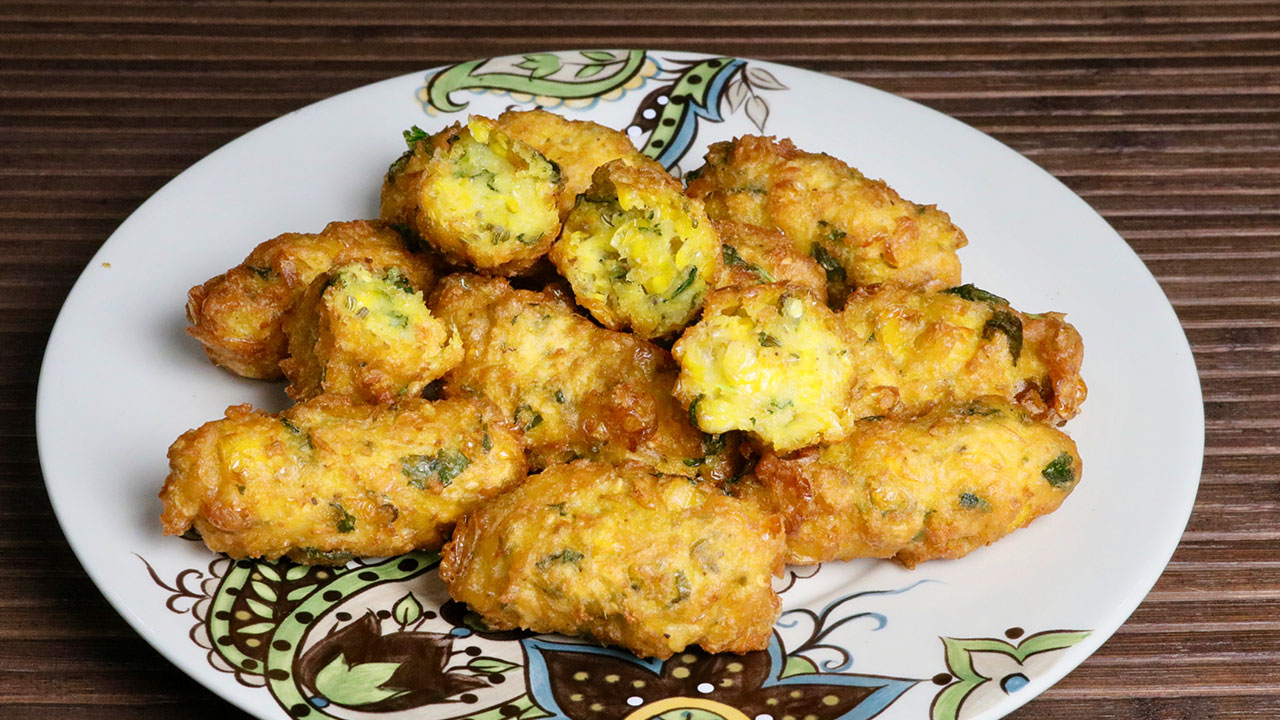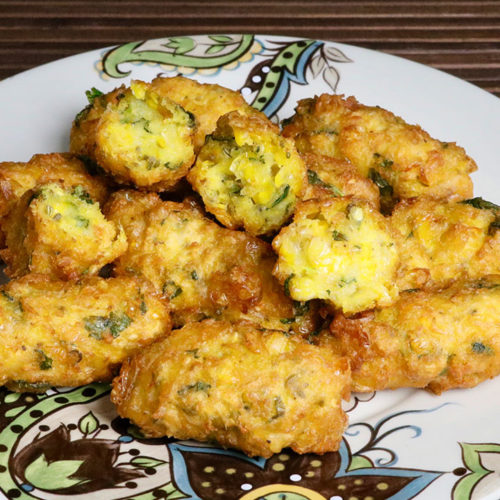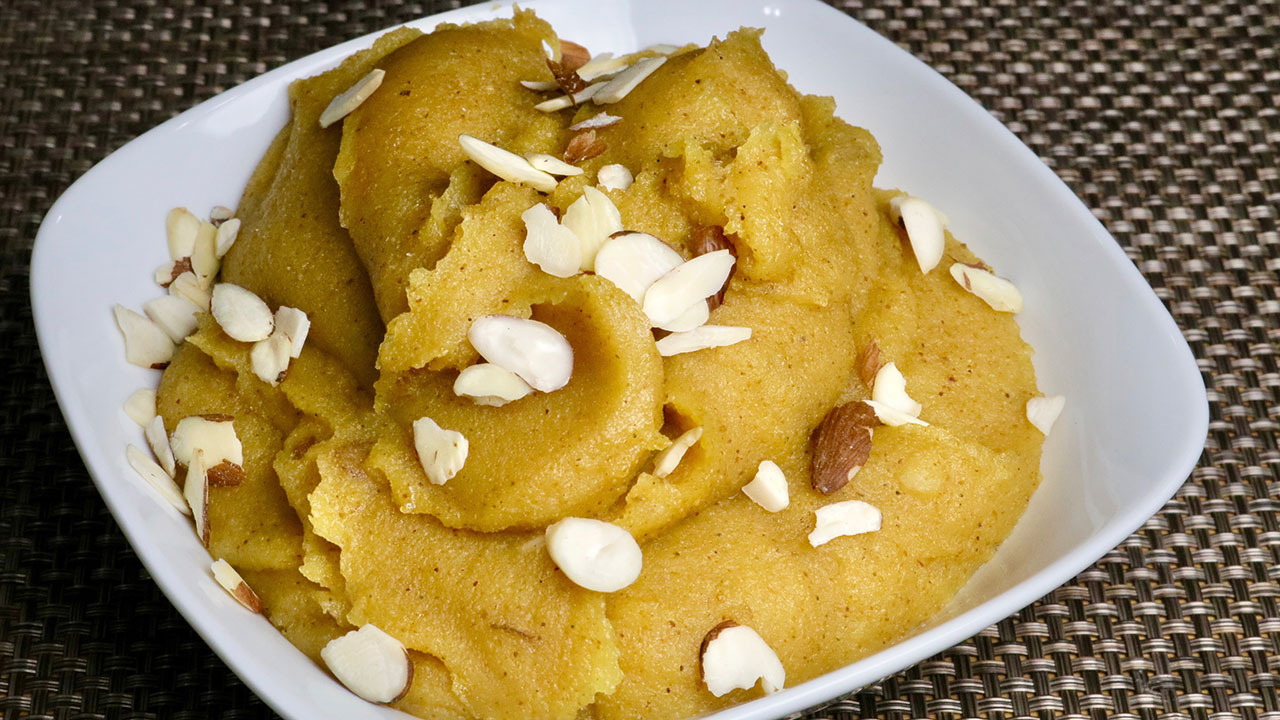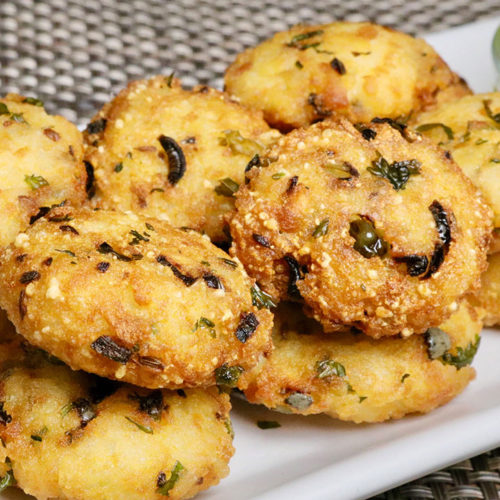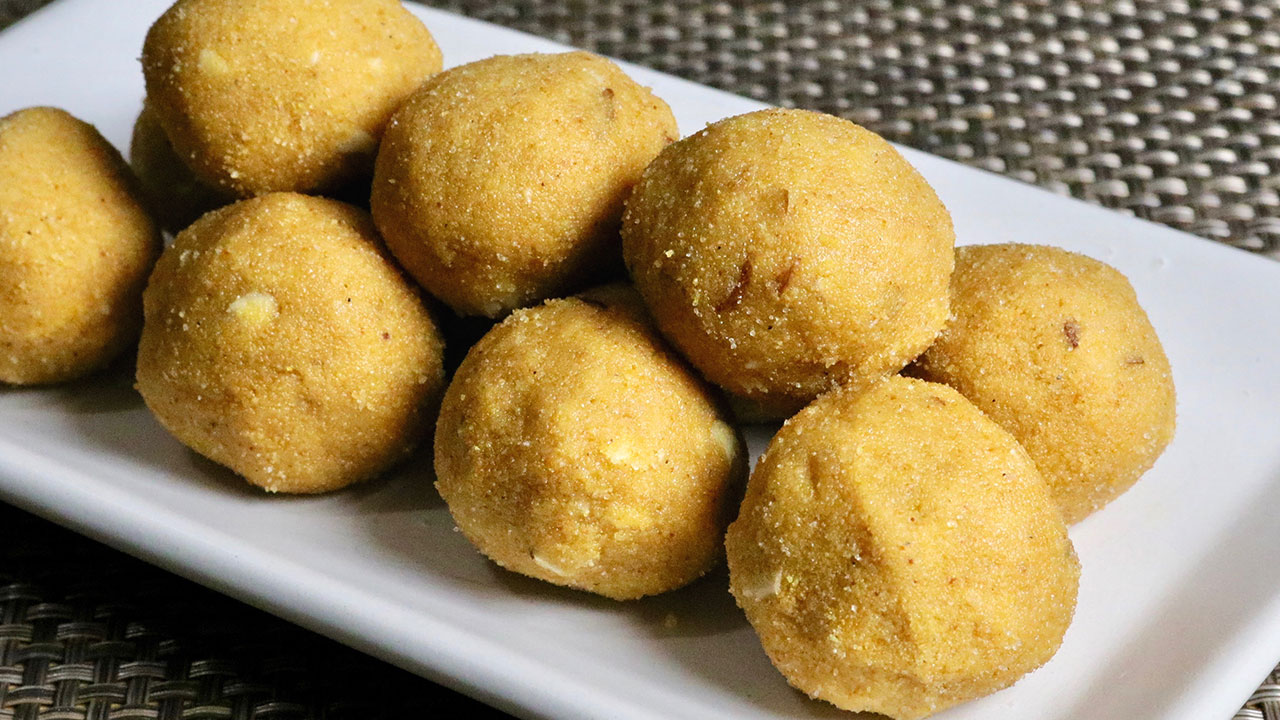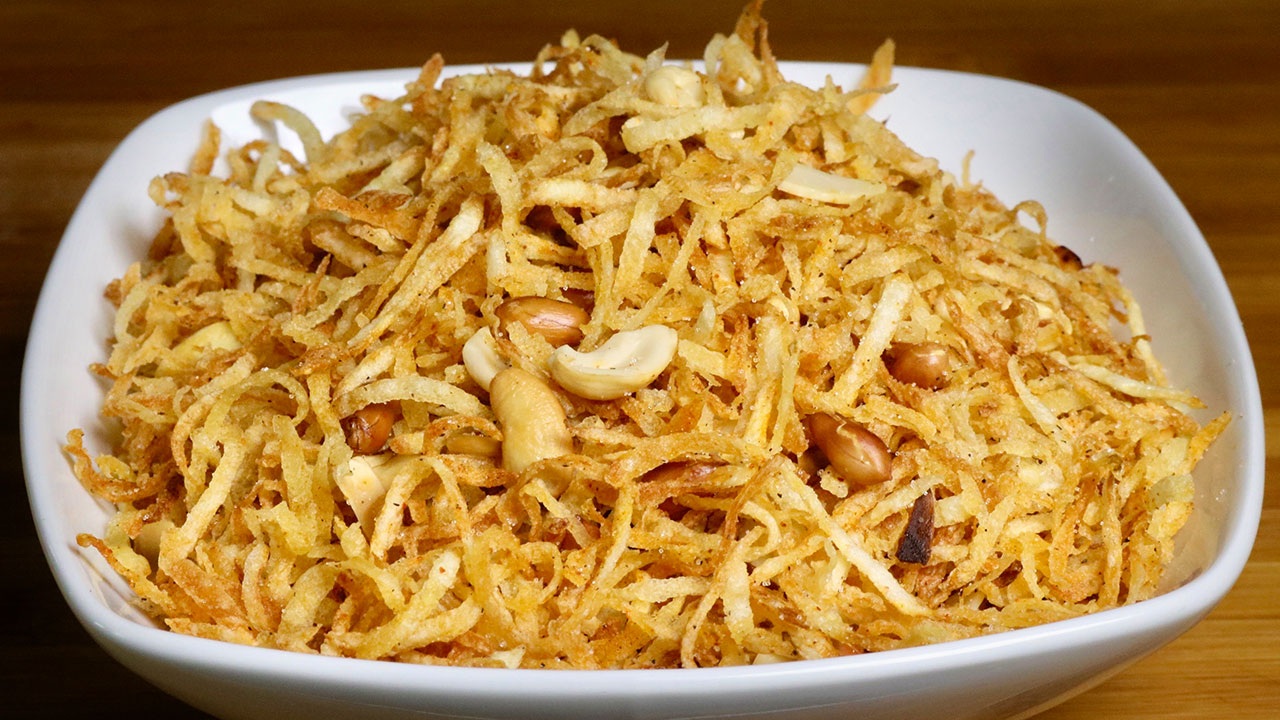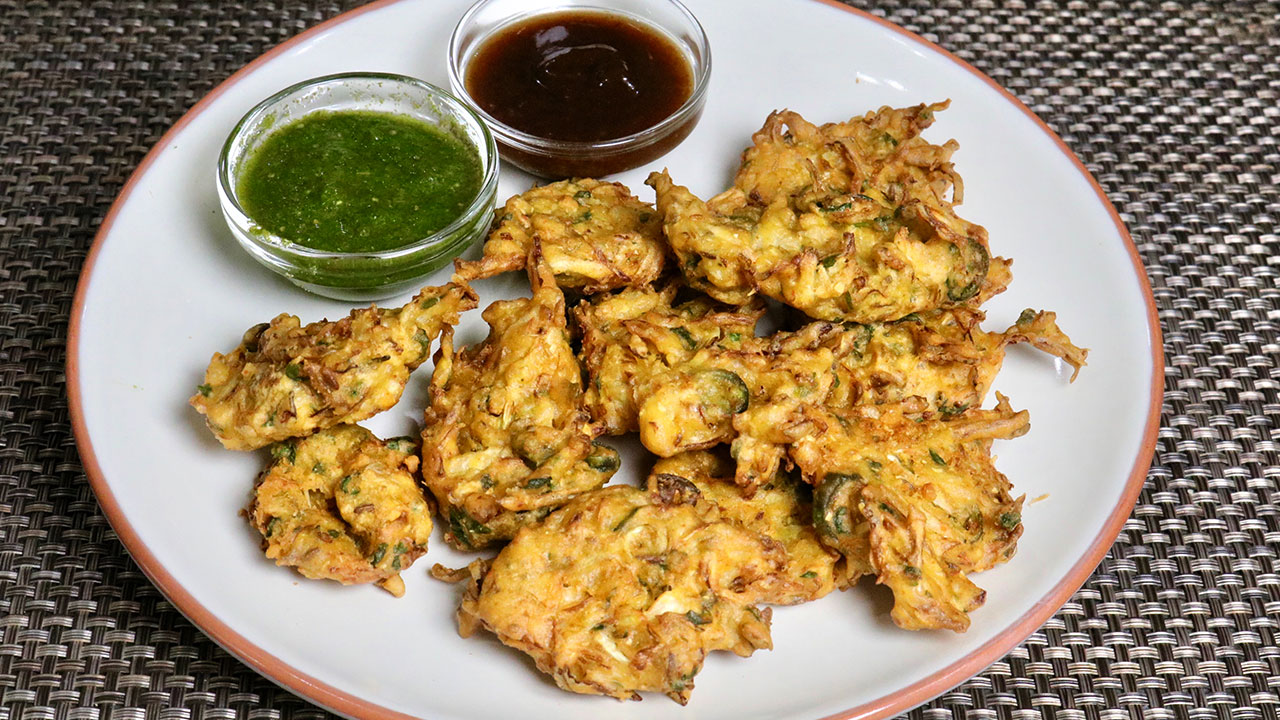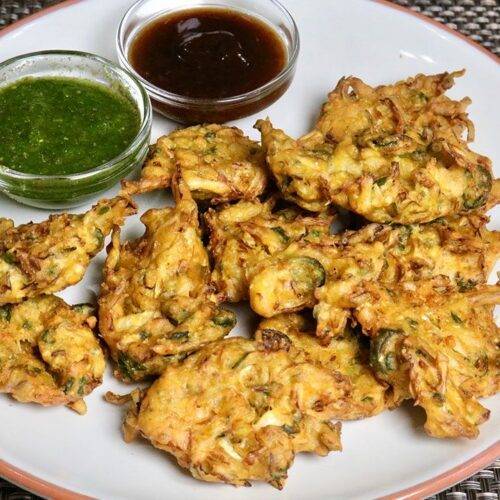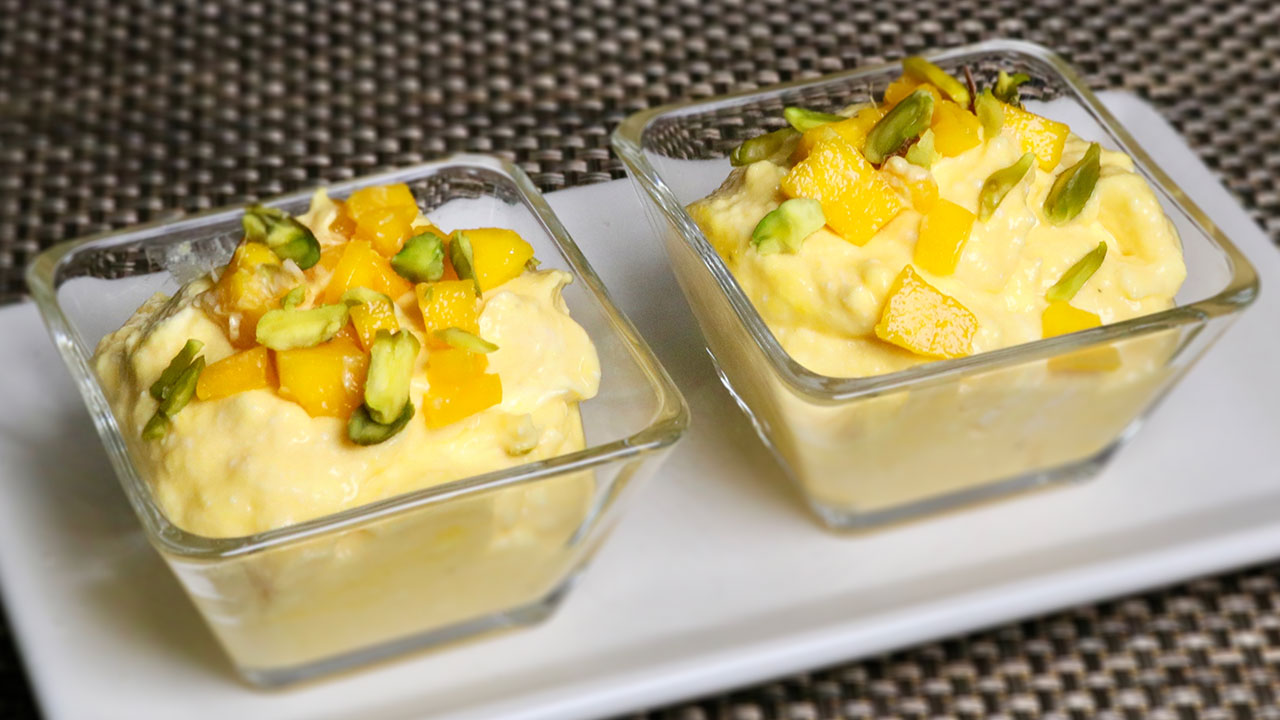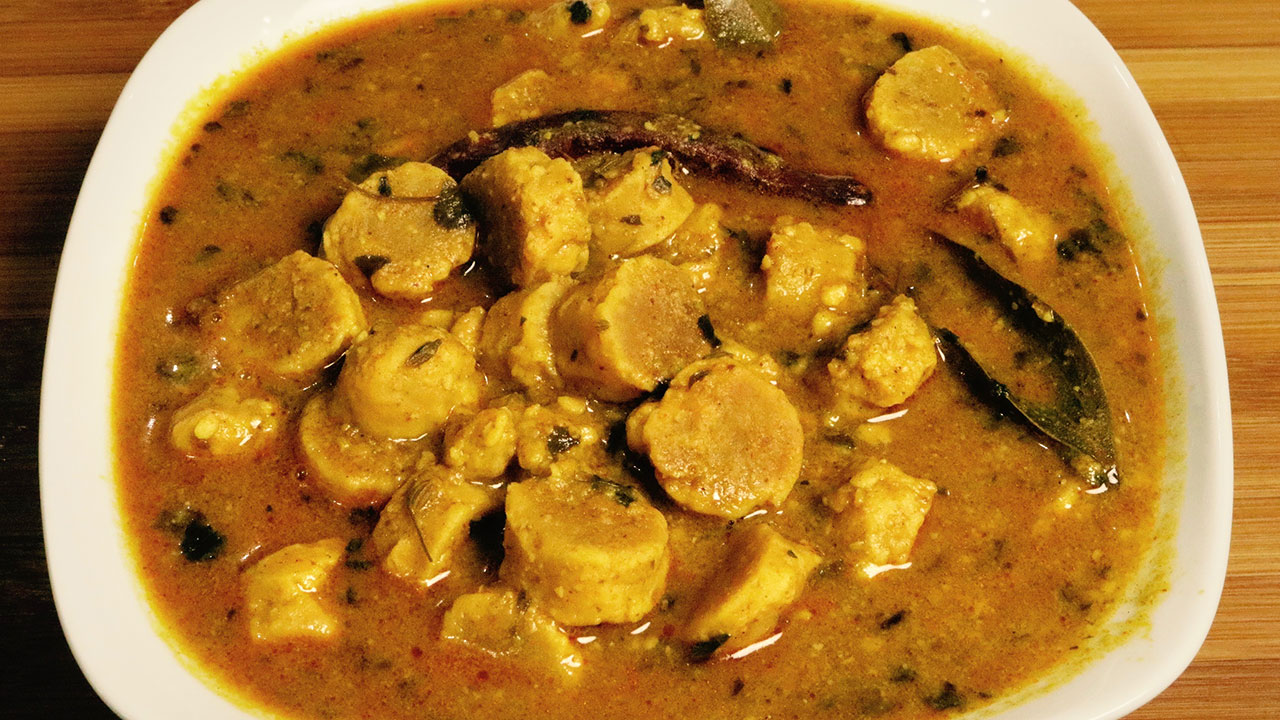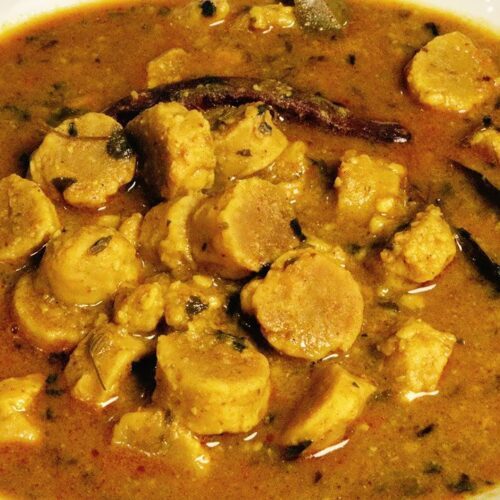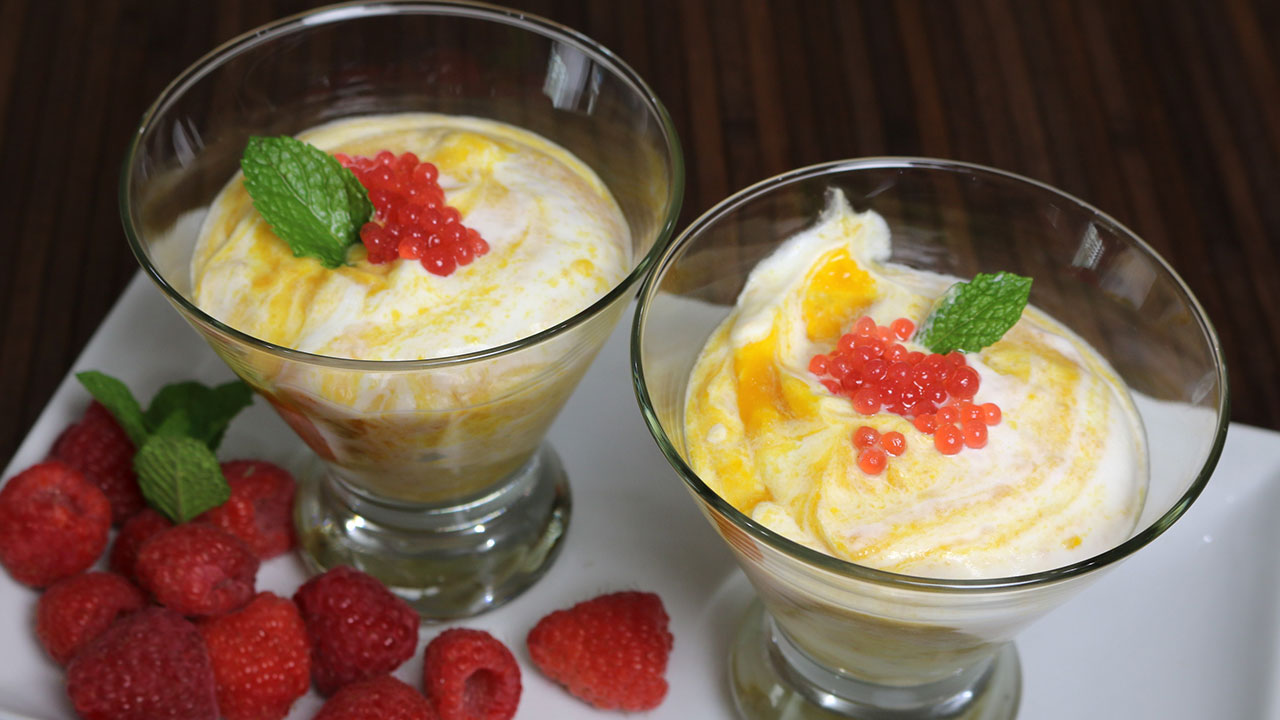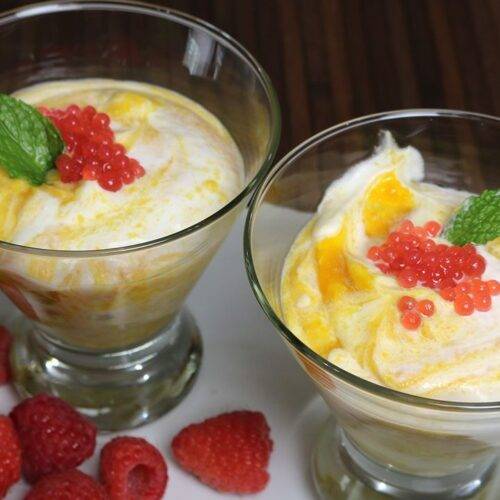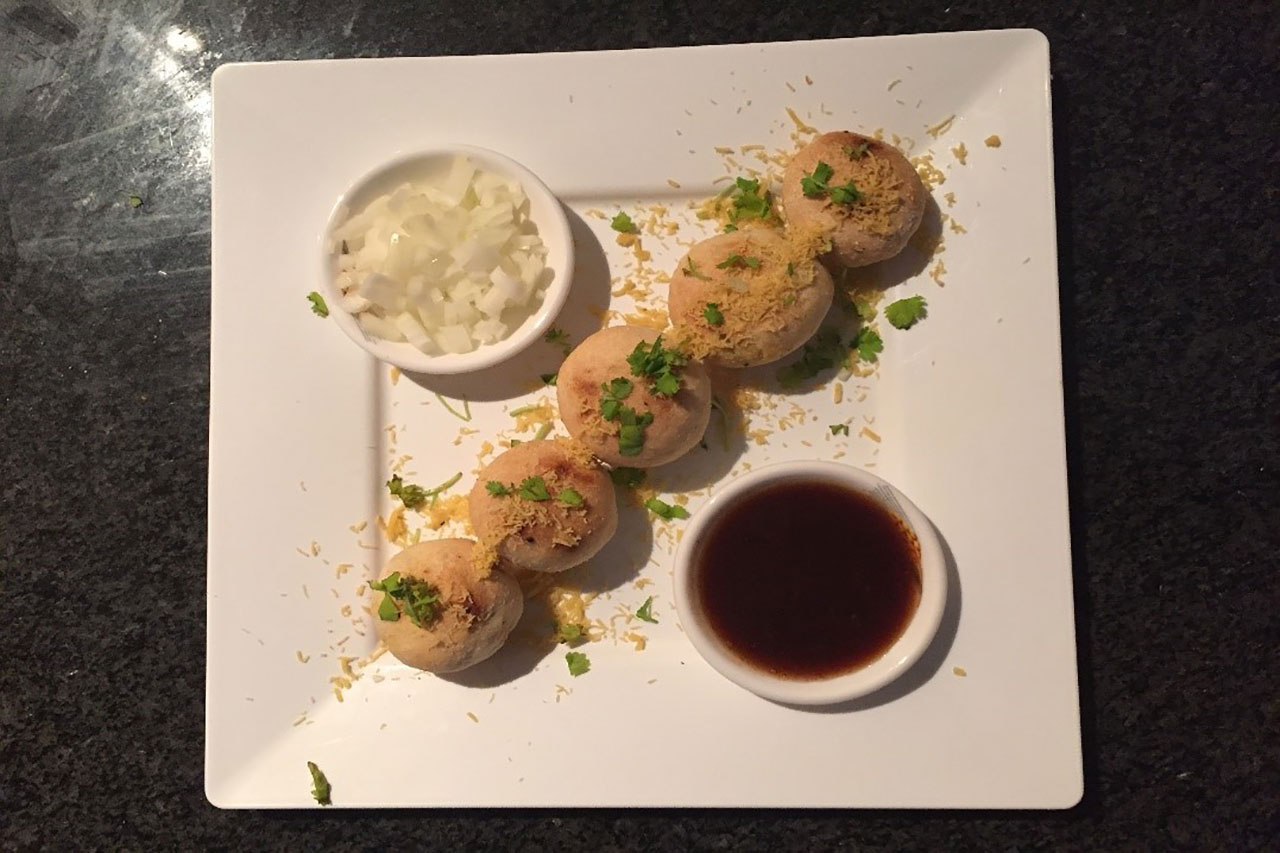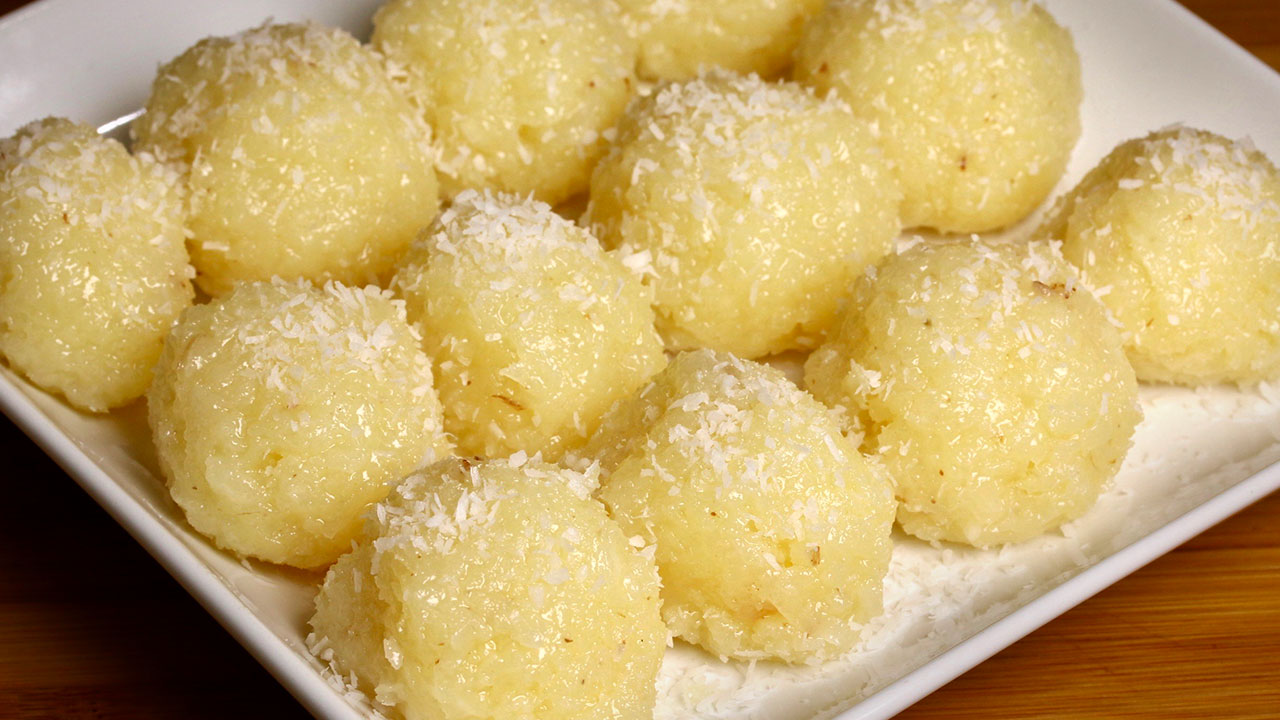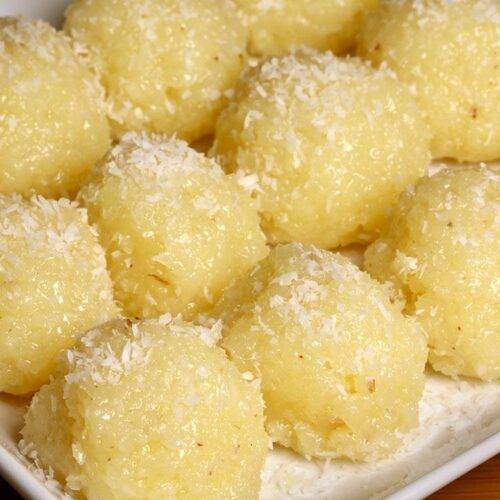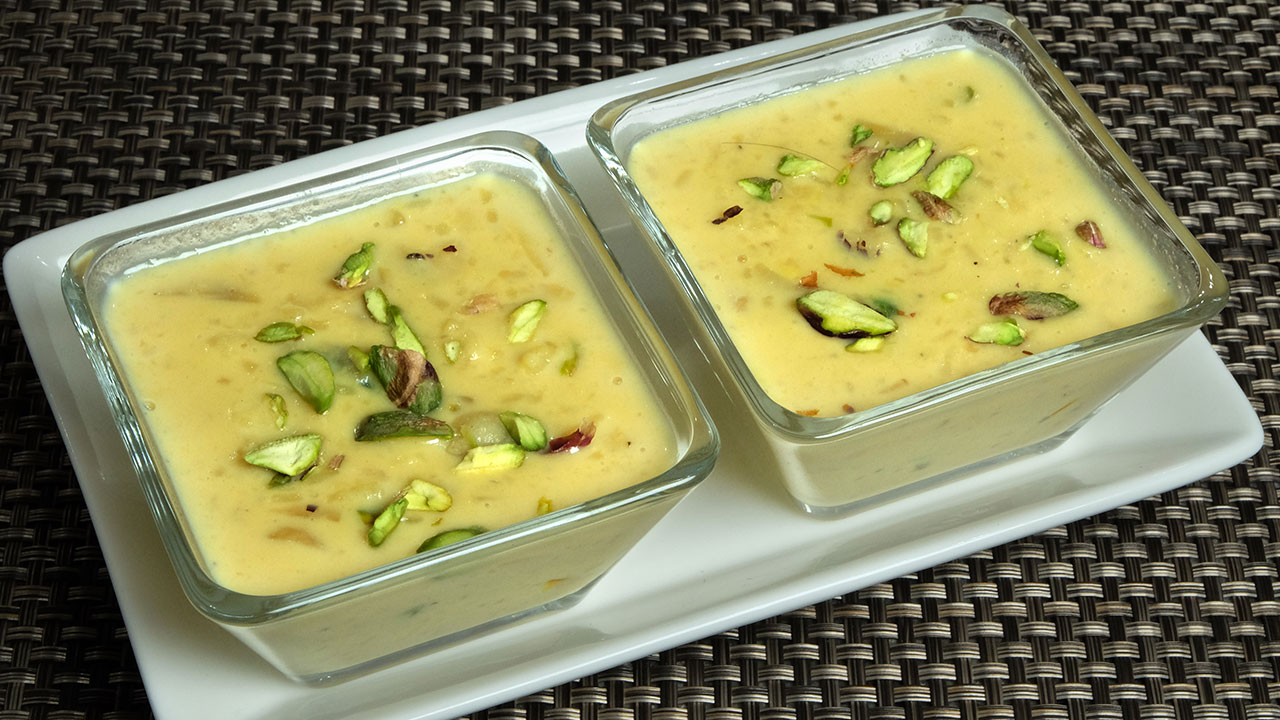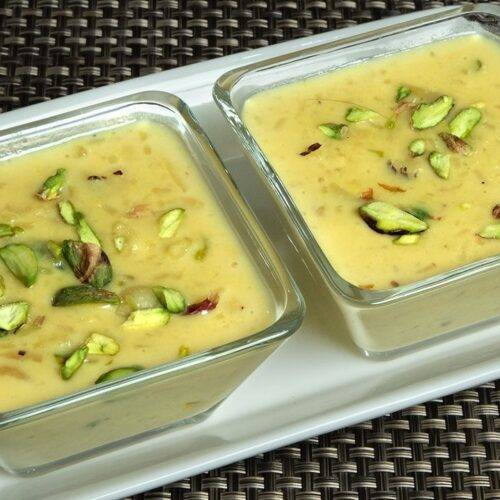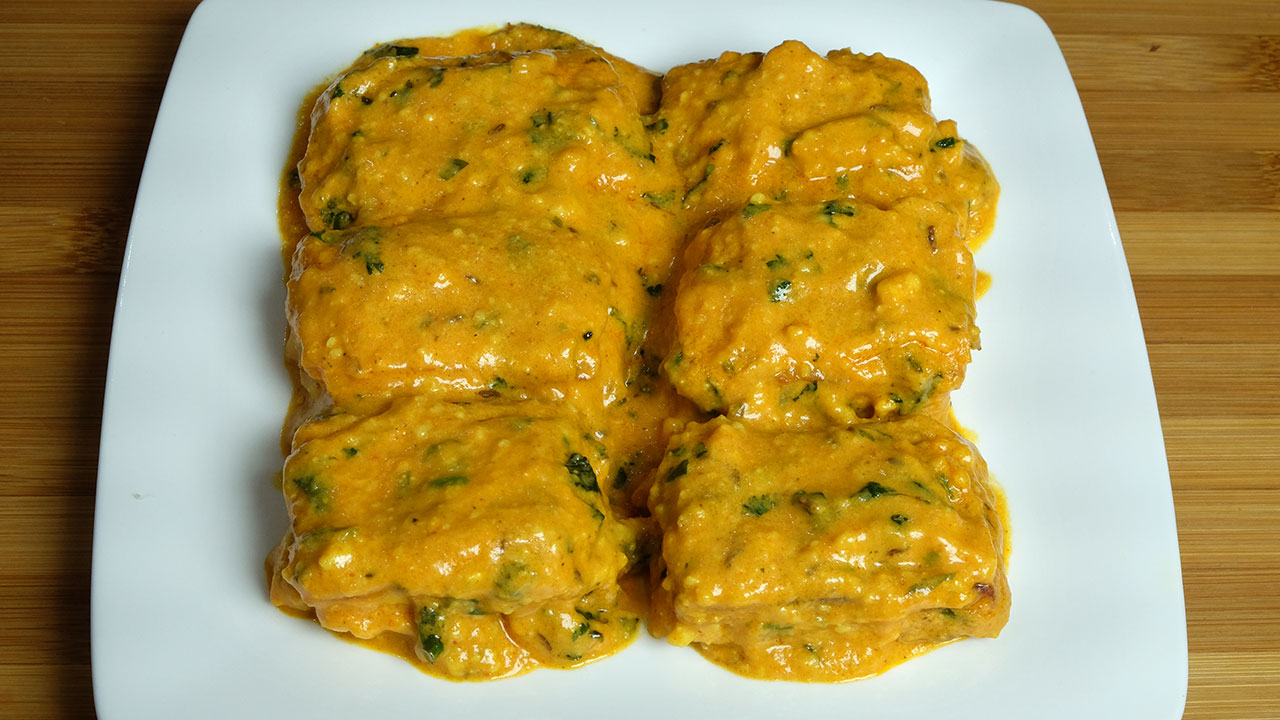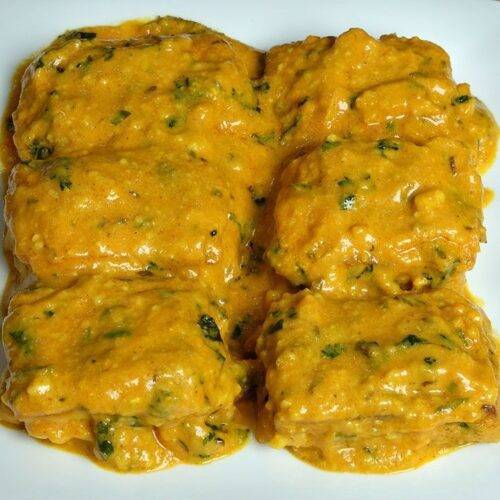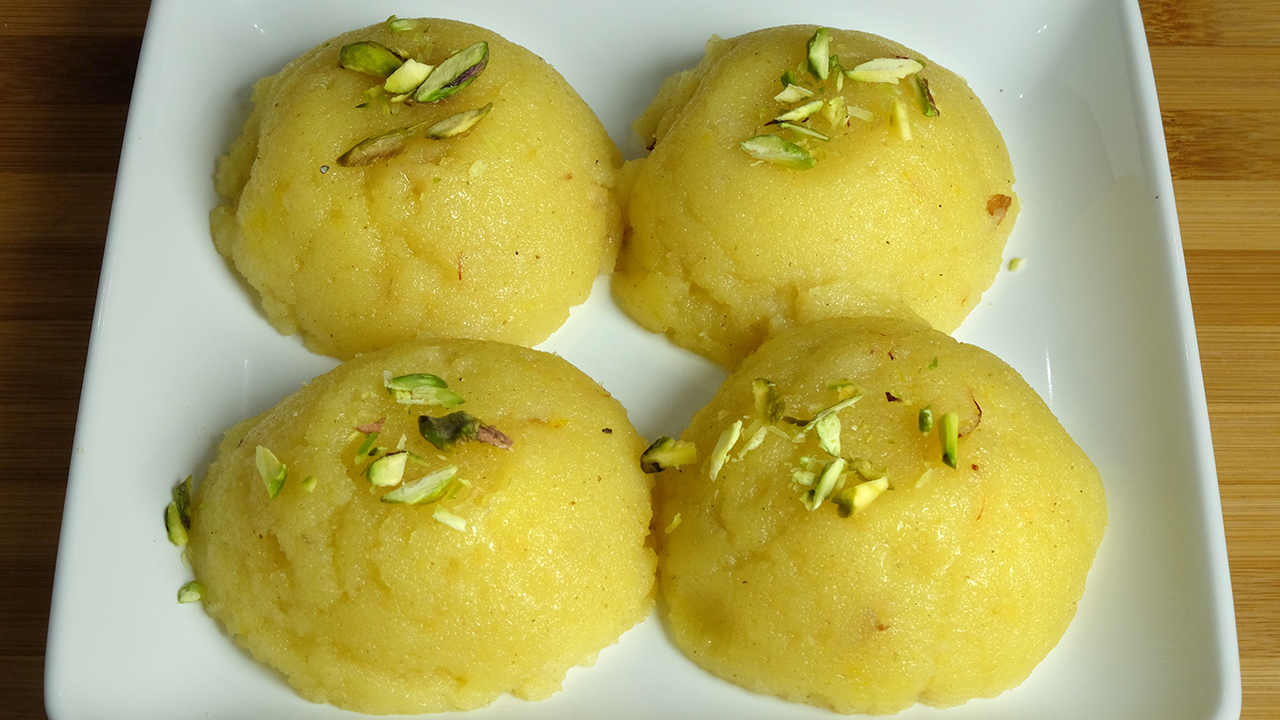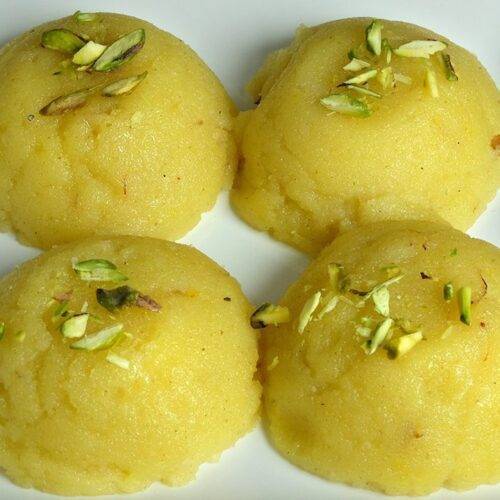Corn Cutlets (Corn Fritters)
Ingredients
- 2 cup yellow corn I am using frozen corn
- 1 tsp fennel seeds coarsely ground, saunf
- 1/2 tsp salt
- 1 tsp ginger grated, adrak
- 1 Tbsp green chili finely chopped, hari mirch
- 1 Tbsp cilantro finely chopped, hara dhania
- 1 tsp mango powder amchoor
- 1/4 cup rice flour chawal ka atta
Also Need
- oil to fry
Instructions
- Defrost the corn, and pat dry. Then blend the corn to coarse paste without adding any water.
- Transfer the paste to a large mixing bowl. Add all the spices, ginger, fennel, coriander, green chili, mango powder and salt, mix it well.
- Add rice flour to the corn mixture, mix it well. Mixture should hold together, and consistency should be like a soft dough. If needed add little more rice flour.
- Wash and grease your palm lightly, divide the dough into 12 equal parts and shape the into bullets.
- Heat the oil in a frying pan on medium heat. Oil should be moderately hot. To check the oil, drop a little piece of mixture, mixture should sizzle and come up. Drop the rolls slowly into it, taking care not to overlap them.
- Fry the cutlets until they are golden brown, turning occasionally. This should take about 6-7 minutes. Take them out over a paper towel.
Notes
How to Make Corn Cutlet: A Delicious Recipe
Corn Cutlet is a versatile appetizer perfect for Holi, Krishna Janmashtami, or any party occasion, offering a quick and easy gluten-free snack option that’s also suitable for vegans, showcasing the delightful flavors of corn in every bite. These crispy treats are perfect for any occasion, whether it’s a party, a family gathering, or simply a cozy evening at home. In this recipe, we’ll explore how to make corn cutlet step by step, ensuring a perfect result every time.
Step 1: Preparing the Ingredients
To start making corn cutlet, gather the following ingredients: canned corn kernels, boiled potatoes, bread crumbs, chopped cilantro, minced green chilies, ginger paste, garam masala, amchur (dry mango) powder, salt, and oil for frying. These simple ingredients come together to create a delicious blend of flavors and textures in every bite.
Step 2: Mashing the Potatoes and Corn
Begin by draining the canned corn kernels and boiling the potatoes until they are soft. Once they’re cooked, mash them together in a large bowl until you have a smooth mixture. This forms the base of your corn cutlet, providing both substance and binding for the other ingredients.
Step 3: Adding Flavorful Ingredients
Now it’s time to add the flavorings to your corn and potato mixture. Mix in chopped cilantro, minced green chilies, ginger paste, garam masala, amchur powder, and salt according to your taste preferences. These spices add depth and complexity to the corn cutlet, elevating it from simple to sensational.
Step 4: Forming the Cutlets
Once all the ingredients are well combined, shape the mixture into small patties or cutlets. You can make them any size you like, but smaller cutlets are easier to handle and cook more evenly. Coat each cutlet in bread crumbs, ensuring that they’re thoroughly coated on all sides for maximum crispiness.
Step 5: Frying to Perfection
Heat oil in a deep frying pan or skillet over medium heat. Carefully place the breaded cutlets into the hot oil, making sure not to overcrowd the pan. Fry them until they’re golden brown and crispy on the outside, flipping them occasionally to ensure even cooking. Once they’re done, remove the corn cutlets from the oil and place them on a paper towel-lined plate to drain off any excess oil.
Step 6: Serving and Enjoying
Your corn cutlets are now ready to be served! Arrange them on a platter with your favorite dipping sauces or chutneys for added flavor. These cutlets are best enjoyed hot and crispy, straight from the frying pan. Serve them as an appetizer, snack, or even as a side dish alongside your favorite main course. However you choose to enjoy them, these corn cutlets are sure to be a hit with family and friends alike.
Tips for Making Perfect Corn Cutlets
- Ensure that the mashed potato and corn mixture is well combined to create a uniform texture.
- Adjust the amount of green chilies and spices according to your preference for heat and flavor.
- For extra crunch, you can add finely chopped bell peppers to the mixture.
- If you’re short on time, you can use frozen corn kernels instead of canned ones, just make sure to thaw them before using.
- To make these cutlets healthier, you can bake them in the oven instead of frying them. Simply place them on a baking sheet lined with parchment paper and bake at 375°F (190°C) for 20-25 minutes, or until golden brown and crispy.
Variations on Corn Cutlets
- Cheese Corn Cutlets: Add grated cheese to the corn and potato mixture for a gooey, cheesy twist.
- Spicy Corn Cutlets: Increase the amount of green chilies or add red chili powder for an extra kick of heat.
- Corn and Paneer Cutlets: Mix crumbled paneer (Indian cottage cheese) with the corn and potato mixture for added richness and protein.
- Corn Tikki Chaat: Serve the cutlets topped with yogurt, tamarind chutney, and chaat masala for a delicious Indian street food-inspired treat.
Benefits of Corn Cutlets
- Rich in fiber: Corn is a good source of dietary fiber, which aids in digestion and helps keep you feeling full for longer.
- Nutrient-dense: Corn is packed with essential vitamins and minerals, including vitamin C, vitamin B6, and potassium.
- Versatile: Corn cutlets can be customized with a variety of spices and ingredients to suit your taste preferences.
- Crowd-pleaser: Whether you’re serving them at a party or a family dinner, corn cutlets are sure to be a hit with guests of all ages.
FAQs about Corn Cutlets
Can I make corn cutlets ahead of time and reheat them later?
- Yes, you can prepare the cutlets in advance and store them in the refrigerator for up to 2-3 days. When ready to serve, simply reheat them in a preheated oven at 350°F (175°C) for 10-15 minutes, or until heated through.
Can I freeze corn cutlets?
- Yes, you can freeze uncooked corn cutlets for up to 1 month. Place them on a baking sheet lined with parchment paper and freeze until firm, then transfer them to a freezer-safe bag or container. When ready to cook, fry them directly from frozen, adding a few extra minutes to the cooking time.
Can I make corn cutlets without bread crumbs?
- While bread crumbs help to bind the cutlets and create a crispy exterior, you can substitute crushed cornflakes or panko breadcrumbs for a similar effect.
Are corn cutlets gluten-free?
- If you use gluten-free breadcrumbs or omit them altogether, corn cutlets can be made gluten-free. Just be sure to check the labels of all ingredients to ensure they are gluten-free.
Other Recipes on Manjula’s Kitchen
If you’re looking to explore more Indian recipes, appetizers, beverages, and desserts, be sure to check out the following links on Manjula’s Kitchen. Here are some links to recipes on Manjula’s Kitchen official website:
Chana Chaat (Spicy Chickpea Salad) Recipe
Pav Bhaji (Spicy Vegetable Hash with Buns) Recipe
Raj Kachori (Crunchy Chaat) Recipe
These recipes should offer you a flavorful experience straight from Manjula’s Kitchen.

